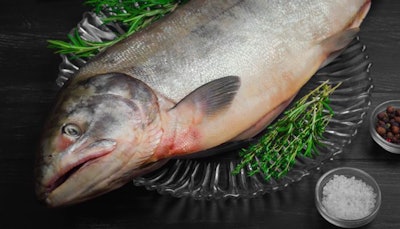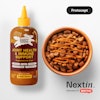
Limited ingredient diet (LID) dog and cat foods use a minimal number of ingredients, but must still provide complete nutrition. An LID challenges pet food formulators to provide all essential amino acids, fatty acids, vitamins and other nutrients, while using only a few ingredients.
Greg Aldrich, PhD, pet food program coordinator at Kansas State University discussed production of limited ingredient diets with Will Henry, director of research and development for Extru-Tech Inc., during a Petfood Industry webinar, “How to solve extruded LID pet food production challenges.”
Aldrich noted that LIDs started as elimination diets meant to help veterinarians diagnose allergies and other adverse reactions to pet food ingredients. In an elimination diet, formulators use only a single protein and starch, then add back in other ingredients to determine which was causing problems for pets’ digestion.
These elimination diets were never meant to be nutritionally complete, he said. However, the general consumer market transformed veterinary elimination diets into limited ingredient diets. Pet food formulators often must use novel proteins and other ingredients in LIDs to avoid allergies, including these four ingredients
1. Venison
Venison may conjure images of orange camo-clad woodsmen, but most venison in the commercial market comes from farms, particularly in New Zealand, wrote Aldrich in his Petfood Industry column, “Venison, rabbit and buffalo: A throwback to our pets’ primitive past.” Along with avoiding allergies to beef, chicken or other common pet food proteins, venison also taps into the trend of feeding dogs food that their wolf ancestors devoured.
Venison is most common in wet dog food, appearing in 4.82 percent of the more that 7,000 recipes in the Dog and Cat Food Ingredient Center database. Although cats’ ancestors probably didn’t take down too many 10-point bucks, venison appears in 2 percent of dry cat foods.
2. Lamb
Lamb was an early novel protein that has now become common in conventional pet foods, according to an analysis of the Dog and Cat Food Ingredient Center. In dry dog food, lamb meal is included in 255, or 12 percent of the recipes listed in the database, with lamb listed in 129, or 6 percent of the recipes. In total, lamb of some form was included in 961 dog food recipes.
3. Salmon
An analysis of the Dog and Cat Food Ingredient Center found that salmon meal appears in the ingredient decks of nearly 23 percent of dry dog foods. Considering dry cat foods, nearly 19 percent of products in the database listed salmon meal.
4. Sweet potato
Sweet potatoes have gained a reputation as a superfood in human diets. The tubers have also become popular in LID pet foods, as well as conventional diets. Considering dry dog food, 26.41 percent of the recipes in the database contain sweet potatoes. For dry cat food, 20.63 percent contain sweet potatoes.
More analyses of Dog and Cat Food Ingredient Center information
- Pumpkin found in 20 percent of dry dog food
- Infographic: Popular legumes in dry, wet pet foods
- Chicken rules the roost of dog and cat food proteins
- Cranberries, blueberries top pet food ingredient fruits
- Salmon meal is in nearly one-quarter of dry dog foods
- Lamb remains common in dry dog food
- Cranberries, blueberries top pet food ingredient fruits

















